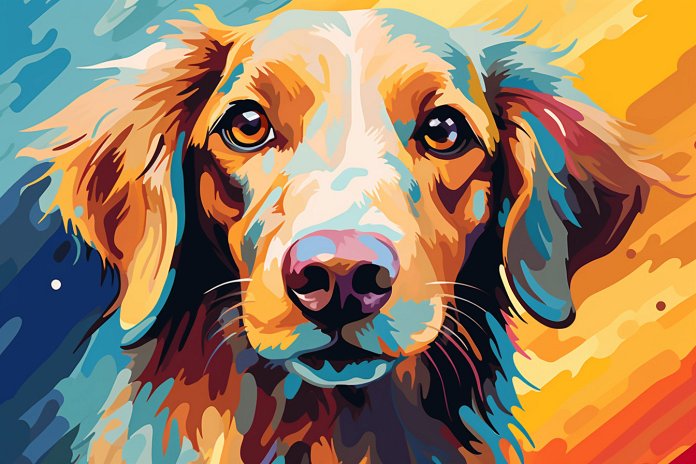
Humans have always been fascinated by dogs, and although we still have much to learn about them, extensive research has been conducted to better understand our beloved four-legged friends. One common myth that has been debunked is the belief that dogs are colorblind. While dogs do see colors differently than humans, they are not completely colorblind due to biological differences in their eyes.
Signs Dogs Can See Colors
There are several behaviors that can indicate whether a dog can see colors. One way to determine this is by observing their preference for certain colored toys. Dogs tend to favor toys that are blue or yellow, while colors like orange appear as a dull gold to them. This explains why orange toys may not be as exciting for dogs. Additionally, dogs may have difficulty finding toys in the grass if they are not blue or yellow, as they do not see colors properly. Therefore, using blue and yellow toys in green grass can help dogs locate them easily.
Body Language
When dogs see blue or yellow objects, they may exhibit certain body language cues, such as becoming alert, barking, tilting their head, wagging their tail, raising their ears, or perking their ears up.
Other Signs
Other signs that dogs cannot see all the colors humans can include favoring one color of the same toy over another, wagging their tail at the sight of a toy in a color they can see, and losing certain colored objects in the grass.
History of Dogs Being Able to See Colors
Historically, it was believed that dogs could not see any color at all. However, in the 1930s, research suggested that dogs could only see in black and white. This misconception persisted for over 50 years until new research in 2013 proved that dogs can indeed see some colors, just not the full range that humans can. It was also discovered that dogs have better vision than previously believed.
Science Behind Dogs Being Unable to See Orange
The biological differences in the eyes of humans and dogs account for the variations in their vision. While both species have rods and cones in their retinas, dogs have more rods and fewer cones than humans. Rods help dogs see in the dark, while cones allow them to perceive color. Dogs are missing the cones that enable them to see red and green, similar to red-green colorblind humans. As a result, dogs see in shades of yellow and blue but cannot perceive colors containing red or green, such as orange or purple.
Dealing With Dogs Seeing Color
Understanding that dogs see the world differently can help us cater to their vision. When buying items for our dogs, it is beneficial to choose colors that they can see vividly. For example, when playing fetch in the yard, avoid green and orange toys as they blend with the grass. Instead, opt for blue, bright yellow, or even purple toys, which stand out more against the green grass. Importantly, dogs are content with their lives regardless of the colors they cannot see, so there is no need to stress them by attempting to sort toys by color.
Overall
Overall, while dogs may not see the same range of colors as humans, they still have the ability to perceive certain colors and live happy lives.
Dogs can see colors, but their color vision is limited to shades of blue and yellow.

Tips & Things to Know
1️⃣ Dogs can see in a limited color range, but they cannot see all the same colors as humans. Their eyes are biologically different, and they primarily see shades of blue and yellow.
2️⃣ Pay attention to your dog’s body language when they see blue or yellow objects. They may display signs such as alertness, barking, head tilting, wagging tail, and raised ears.
3️⃣ When buying toys or playing fetch with your dog, choose toys in colors that they can see vividly, such as blue or bright yellow. Avoid green or orange toys, as they may blend with the grass and appear dull to your dog. Remember, your dog is still happy and content even if they can’t see all the colors we can.
Frequently Asked Questions, Answered ✅
1. Can dogs see colors?
– Yes, dogs can see colors, but their range is limited to shades of blue and yellow.
2. How can I tell if my dog can see a certain color?
– You can observe your dog’s behavior and see if they show interest or preference towards toys in certain colors, such as blue or yellow.
3. Why do dogs have a harder time finding toys in the grass?
– Dogs have difficulty seeing certain colors, such as green and orange, which may blend in with the grass. It is recommended to use blue or yellow toys for easier visibility.
4. What are some body language cues that indicate a dog has seen a color it can perceive?
– Alertness, barking, head tilting, wagging tail, and raised ears are some common body language cues that may indicate a dog has seen a color it can perceive.
5. Why can’t dogs see all the colors humans can?
– Dogs have a different biological makeup of their eyes compared to humans. They have fewer cones, which allow for color perception, particularly in red and green. This means they see in shades of blue and yellow, but not red or green.